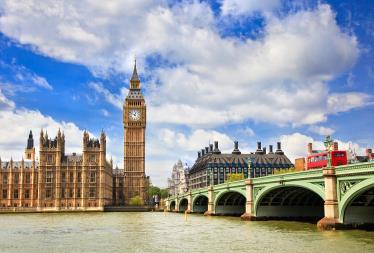UK defined benefit schemes that see their Pension Protection Fund (PPF) levy increase materially under a forthcoming levy model may be granted some transitional protection, the lifeboat fund has suggested.
Publishing its consultation on the new bespoke insolvency model, the PPF said the proposals were found to be superior than other existing models in five of nine areas, and as effective as other models in the remaining four.
The model, which would place less emphasis on non-financial company data, will likely result in a minority of DB funds paying a higher levy in future due to a “material shift” in the ranking of some plan sponsors, despite a 10-band approach being maintained.
The fund said it had considered a broader top band, reducing the overall number to eight, but that this would have resulted in a slight levy increase for those schemes in the top band, rather than the current reduction.
Martin Clarke, executive director of financial risk at the PPF, said the new model, designed in conjunction with Experian Credit Services, would ultimately provide more “discriminative and robust insolvency risk scores, plus offering greater transparency and access to levy payers”.
Clarke, who will depart the PPF later this year after being named UK government actuary, told IPE the PPF was “pretty confident” it would be able to explain how any changes to the ranking of sponsors would be caused.
“Nevertheless, we are discussing [how] we might moderate some of the impacts in the first year, by having a transitional protection,” he said.
“It is not part of our core proposition, but we are offering it up to comment from our stakeholders.”
He added that it would be at the cost of the “majority” of funds that would not need any protection.
“It is a question of how much solidarity the population as a whole wants to [offer], or how much self-interest they want to maintain,” he said.
The proposed transitional system would compare a fund’s 2014-15 levy score from the current Dun & Bradstreet system to that of the proposed Experian model, had it been in place for that period.
The consultation said that, if the increase suffered because the Experian model exceeded 200%, then it would abate the 2015-16 payment.
However, it also cautioned that the proposal should not be viewed as a hard, 200% cap, as any further deterioration in risk between the 2014-15 and 2015-16 levy period would need to be accommodated.
Joanne Shepard, senior consultant at Towers Watson, said the radical overhaul would inevitably mean changes for affected funds.
“The PPF thinks its new way of calculating levies will better reflect the risks schemes pose – and therefore that some schemes have been paying more than their fair share in the past, while others have not been paying enough,” she said.
The PPF’s consultation will also consider whether there should be an option allowing sponsors with a credit rating to over-ride any levy calculation, with the score instead replaced by one that employed the default probability of its rating.
Clarke said the argument for including credit ratings was that these were “the product of a much more intensive” analytical exercise.
“In aggregate, they have proved to be good predictors,” he said.
The new model, which would come into effect at the beginning of the three-year levy period to 2017-18, has been independently assessed by PwC, as well as the lifeboat fund’s industry steering group.


















No comments yet